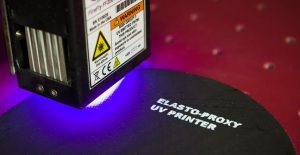 The Elasto Proxy Blog is starting the New Year by looking back at how we helped readers solve their sealing and insulation challenges in 2016. We’ve come a long since January 11, 2011, that day six years ago when we published our very first (and very short) blog entry.
The Elasto Proxy Blog is starting the New Year by looking back at how we helped readers solve their sealing and insulation challenges in 2016. We’ve come a long since January 11, 2011, that day six years ago when we published our very first (and very short) blog entry.
Whether you’re new to the Blog or a veteran reader of our 225+ posts, Elasto Proxy is glad to have you with us. Here are our Top 6 Blog Posts from 2016 in terms of views. What would you like to read about in 2017?
#1 Infrared Splicing for Rubber Gaskets
Infrared splicing provides a cost-effective alternative to rubber molding for larger gaskets. This innovative splicing technique is faster and more energy-efficient than hot splicing. Unlike cold bonding, another gasket joining technique, infrared splicing eliminates time-consuming, manual operations that can introduce inconsistencies. IR splicing also supports precise part alignments without degrading PE films.
Learn More
#2 Rubber Door Seals for Passenger Rail Cars
When a rail car manufacturer needed to replace the door seals on passenger trains, Elasto Proxy applied its expertise in technical design, compound selection, custom fabrication, and logistics. The rail car manufacturer’s customer, a major passenger rail service, wanted to solve this problem quickly. Elasto Proxy created new door seals in less than two weeks and sent them to Philadelphia for installation.
Learn More
#3 High-Temperature Seals for Commercial Ovens
When a restaurant chain began toasting its sandwiches, an oven manufacturer faced a new challenge. The manufacturer’s oven contained a moveable tray that held sandwiches during cooking, but that caught on the door seal whenever a sandwich was removed. Eventually, the overlap between the rubber seal and the metal tray caused the oven seal to loosen. That’s when the manufacturer contacted Elasto Proxy.
Learn More
#4 Thermally-Conductive Silicone Coated Fabrics for Heat Sink Gaskets
Thermally-conductive silicone-coated fabrics offer numerous advantages over other types of thermal management materials. These specialized fabrics feature a smooth, clean finish for a reliable thermal path; have a relatively thin-cross section that helps save space; and are non-toxic for increased safety and reliability. Because they contain fiberglass, silicone-coated fabrics are physically strong, too.
Learn More
#5 Rubber Cab Parts and Acoustic Insulation for Forestry Equipment
When a manufacturer of forestry equipment redesigned an operator cab, the company needed all new components for the interior. These cab parts included acoustic insulation for dampening engine sounds and rubber floor mats for protecting the vehicle’s flooring. That’s when Elasto Proxy applied its technical design and custom fabrication expertise to solve multiple challenges.
Learn More
#6 Fiberglass Gaskets for High-Temperature Sealing and Insulation
Silicones are synthetic elastomers that resist temperatures as high as 500° F. Fiberglass is a reinforced plastic that contains woven glass filaments and resists temperatures as high as 1200° F. This makes fiberglass a good choice for the gaskets used with primary heat exchangers. Yet fiberglass may not be necessary for secondary heat exchanger gaskets, where temperatures are significantly less.
Learn More
How Can We Help You in 2017?
As an experienced provider of specialty seals and custom insulation, Elasto Proxy specializes in low-to-medium volume quantities of industrial rubber products for aerospace, defense, infrastructure, medical and health, mobile equipment, and stainless steel and food equipment. Since our founding in 1989, Elasto Proxy has been a family-owned company that’s built on trust and strong business relationships.
How can we help you in 2017? What sealing and insulation challenges can we help you to solve? To get started, contact us.










